In the global narrative of food safety, one emerging concern casts a shadow on the produce harvested from mining regions.
While these areas are renowned for their mineral riches, an unsettling speculation looms over the foods cultivated within their vicinity, raising red flags about their safety for human consumption.
This report relies on interviews, published and unpublished research works as well as expert opinions from across the country to explore the dangers or otherwise of such foods.
“I am extremely concerned. I do not know exactly where the vegetables and produce on the market are harvested.
"There is no way I would buy crops harvested from a mining site, it is poisoned! It must be. Have you seen how brown the water around these mining sites is?
“As long as they release all these chemicals into the ground and water the crops will by all means be affected.”
Patience, a 40-year-old mother of three, shared her concern on the safety of food harvested from mining sites.
Patience is not in this dilemma alone, Luv News therefore decided to interview Kumasi residents to find out first, if they think crops grown in mining areas are poisoned, whether they are concerned at all and last, if they will eat crops they know are coming from mining areas.
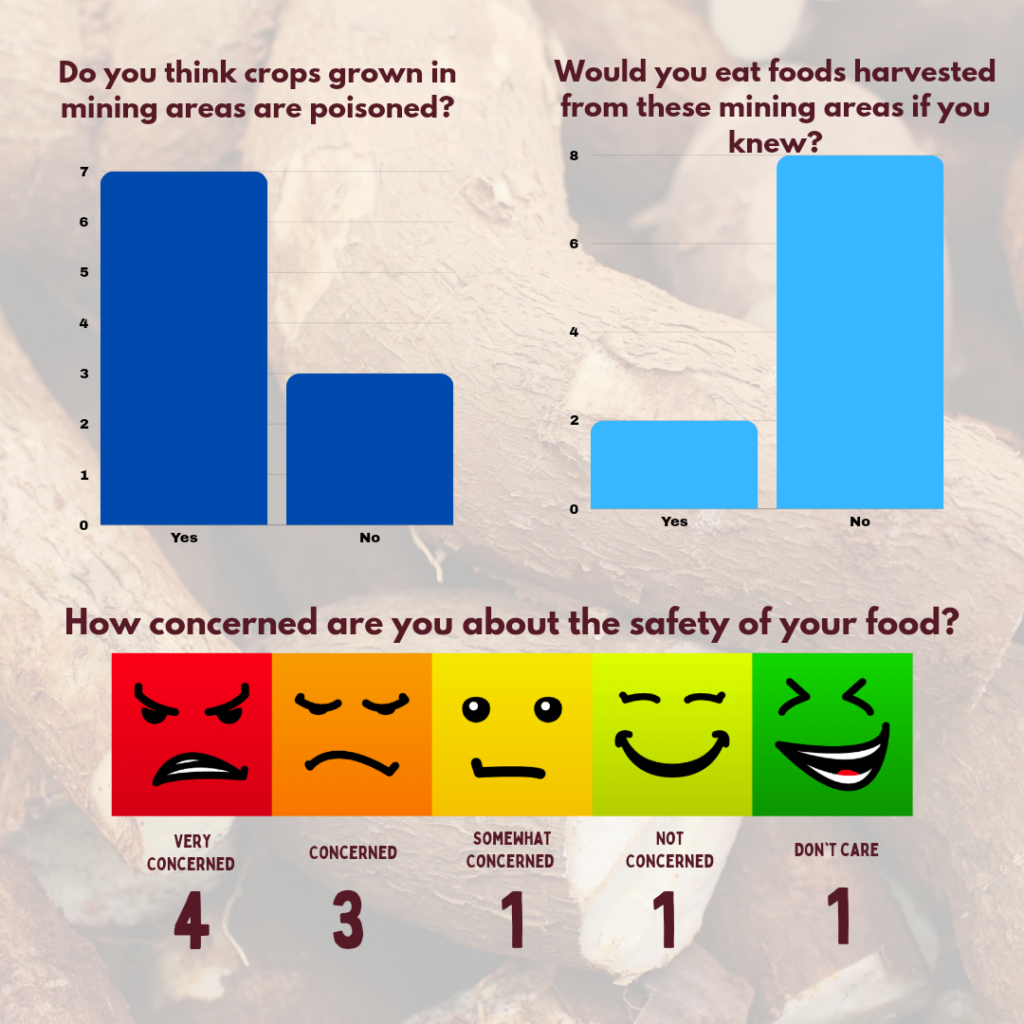
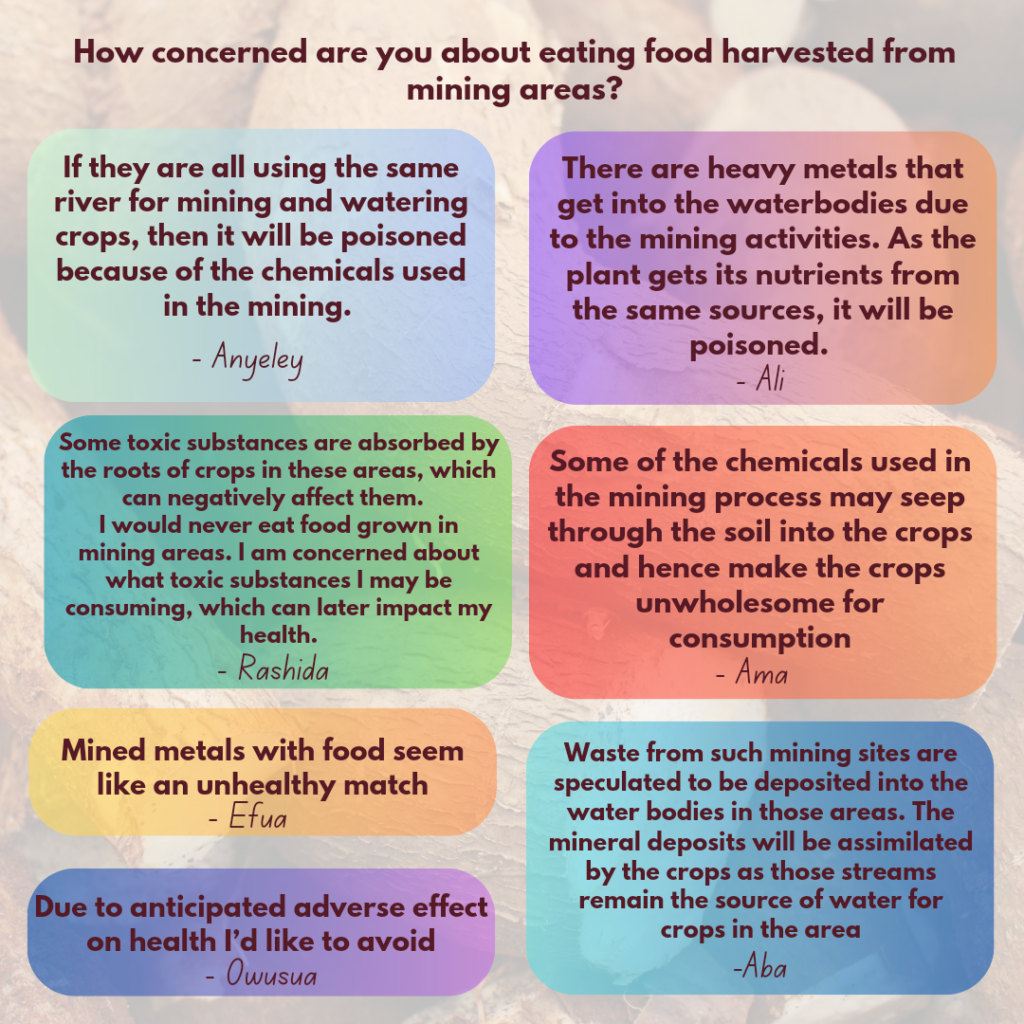
Mining, an essential economic activity, often intertwines with agricultural landscapes. However, the coexistence of these two industries has led to apprehensions regarding the safety of crops grown near mining sites.
The crux of this concern lies in the potential contamination of soil, water, and air by heavy metals and toxic substances inherent in mining operations.
The intricate ecosystem of agriculture is susceptible to the pervasive effects of mining activities. Heavy metals like lead, cadmium, arsenic, and mercury, omnipresent in mining locales, have a pernicious tendency to seep into the surrounding environment.
The case of staples
Illegal mining permanence in the Tarkwa Community in the Western Region of Ghana prompted Dr. David Kofi Essumang, an environmental chemist at the University of Cape Coast in 2006 to ascertain the level of the arsenic, cadmium, and mercury in Cocoyam (Xanthosoma sagittifolium) and Water cocoyam (Colocasia esculenta) in the mining community.
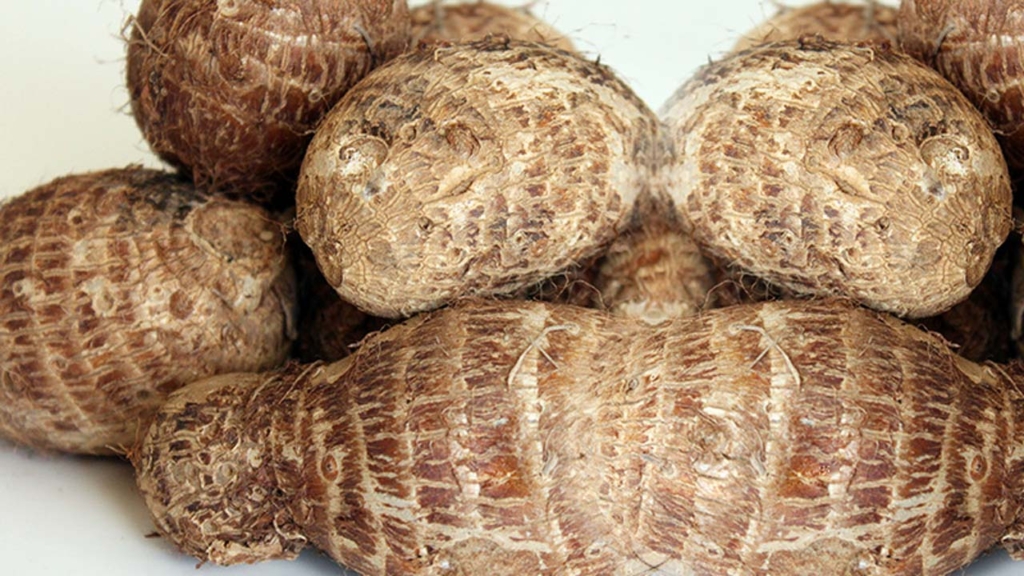
He and three others collected samples from three towns namely; Efuantah, Nsuta and Tamso which are all mining communities.
Dr. Essumang found that the levels of these metals were above acceptable standards.
“Sagittifolium from the soil is 0.043 mg/g is actually higher than the WHO permissible levels of daily oral intake for cadmium in X. sagittifolium. The level of arsenic and mercury in the X. Sagittifolium obtained are 0.146 and 0.003 mg/g, respectively. These values are also higher than the WHO permissible limits.
“The consumption of X. sagittifolium and C. esculenta by human beings may pose serious health risk to them. We find that the levels of arsenic, cadmium and mercury in soil in the study areas are very high and hence their uptake by tuber crops such as X. sagittifolium and C. esculenta,” he pointed out.
In 2015, also, Abubakar Mohammed from the University of Cape Coast also conducted a study to assess heavy metal concentrations cassava in two re-vegetatively restored mined spoils at an AngloGold concession at Obuasi.
He concluded that the levels of the heavy metal concentration in the cassava tubers were within their
threshold levels. That's good news, by the way.
What about vegetables?
In 2006, a master’s degree chemistry student of Dr. Essumang, Ms. Elizabeth Ahadzi also embarked on a study to find out the levels of mercury, zinc and cadmium in leaves of some crops in the mining communities of Tarkwa, Prestea, Bankyim and Agona in the south western part of Ghana.
These leaves were Xanthosoma sagittifolium (kotombre), Manihot esculenta (cassava leaves) and the leaves of Colocasia esculenta (taro).
For the sake of comparison, Ms. Elizabeth took leaves from non-mining towns also.
The results of her study showed that apart from mercury which was above acceptable levels, zinc and cadmium were within normal range. The levels of these metals were however significantly higher in leaves of mining sites than their non-mining counterparts.
“The results of the research reveals that the concentrations of mercury, zinc and cadmium in samples from mining communities were higher than samples from non-mining communities and that there is a significant difference in the means at 95% confidence level. When the results obtained were compared with WHO and EPA permissible values, zinc and cadmium concentrations in the samples were within the nonnal concentration found in plant leaves and conns. The levels of mercury in the samples were however in the phytotoxic concentration range,” she stated.
Indeed, 2006 is such a long time, and therefore the Department of Materials Engineering of the Kwame Nkrumah University of Science and Technology in 2022, also carried out a study to assessed the potential risk of heavy metals in some selected vegetables at an artisanal gold mining site at Moseaso in the Wassa-Amenfi West District of Ghana.
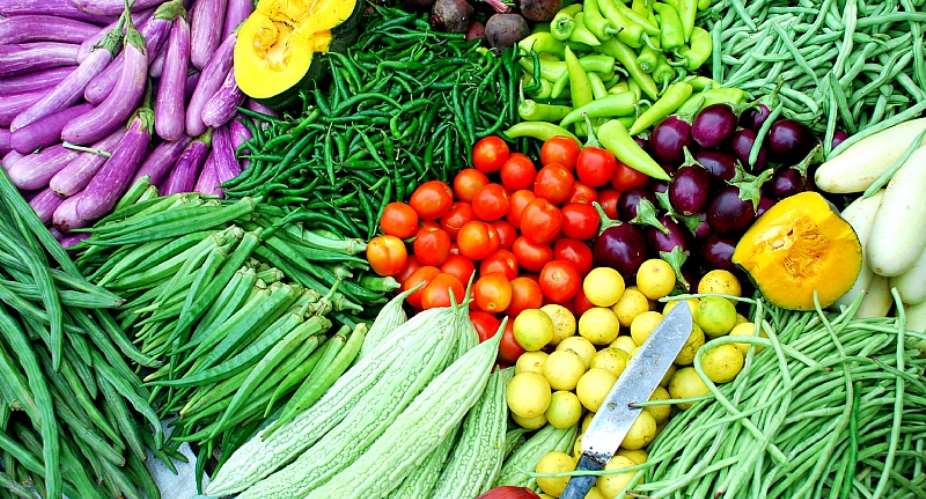
The vegetables sampled from the farms were tomatoes, spring onion, and lettuce were sampled from the farms.
The study revealed that all the examined heavy metals namely; "arsenic, cadmium, lead, and mercury in the selected food crops were above the reference limit."
This means a high susceptibility of vegetables to heavy metals as compared to the staples.
Disease risk?
Dr. Kofi Essumang didn’t, however, end with the detection of the heavy metals. In a report that culminated in a publication in the Environmental Monitoring and Assessment in 2007, he wanted to find out cancer and non-cancer health risk from eating cassava grown in some mining communities in Ghana.
He found that approximately 10 and 8 out of 100 resident adults are likely to suffer from cancer related cases if the continuously consumed these food produce.
“For Prestea, we have 0.010 and 0.12, which also means that approximately 1 out of 100 and 10 resident adults out of 100 are also likely to suffer from cancer related diseases by RME and CTE parameters. The results of the study obtained were found to be above the acceptable cancer risk range of 1×10−6 to 1×10−4, i.e., 1 case of cancer out of 1 million or 100,000 people respectively,” the report stated.
The Moseaso study on the four vegetables also conducted a cancer risk assessment which revealed that, with the exception of lead, the rest could negatively impact health of consumers.
"All the heavy metals considered were above the USEPA-safe prescriptions of 1.0 × 10−6 to 1.0 × 10−4 for both adults and children. Based on the results, it can be recommended that the dietary intake of vegetables grown from the study site is not safe and poses severe health and environmental threats," the scientists stated.
Cooking heavy metals away
With the presence of these heavy metal contaminants in popular food staples in Ghana, Dr. Hayford Ofori and friends from the Food Research Institute of the Council for Scientific and Industrial Research in 2021 wanted to investigate the effectiveness of home processing methods such as boiling, frying and roasting in significantly reducing the levels of heavy metal contaminants in food crops grown in and around two main mining centers in Ghana. The crops are cassava, plantain, yam and cocoyam.
The heavy metals contaminants analyzed for, were arsenic, cadmium, lead, manganese, and mercury.
Unprocessed samples from Akwatia had higher levels of contaminants than those from Obuasi. Levels of manganese, lead and arsenic recorded in all unprocessed samples were higher compared to WHO permissible limits in foods. The levels showed a decreasing trend in the processed samples; with the lowest Arsenic and lead content recorded after frying and boiling.
The results published in journal Toxicology Reports showed that roasting resulted in the least reduction in the heavy metal contaminations in the four food crops.
The levels of cadmium in both processed and unprocessed samples were within safe WHO specifications. Except for lead in unprocessed cassava, boiled cassava and unprocessed plantain and mercury in unprocessed yam and roasted yam.
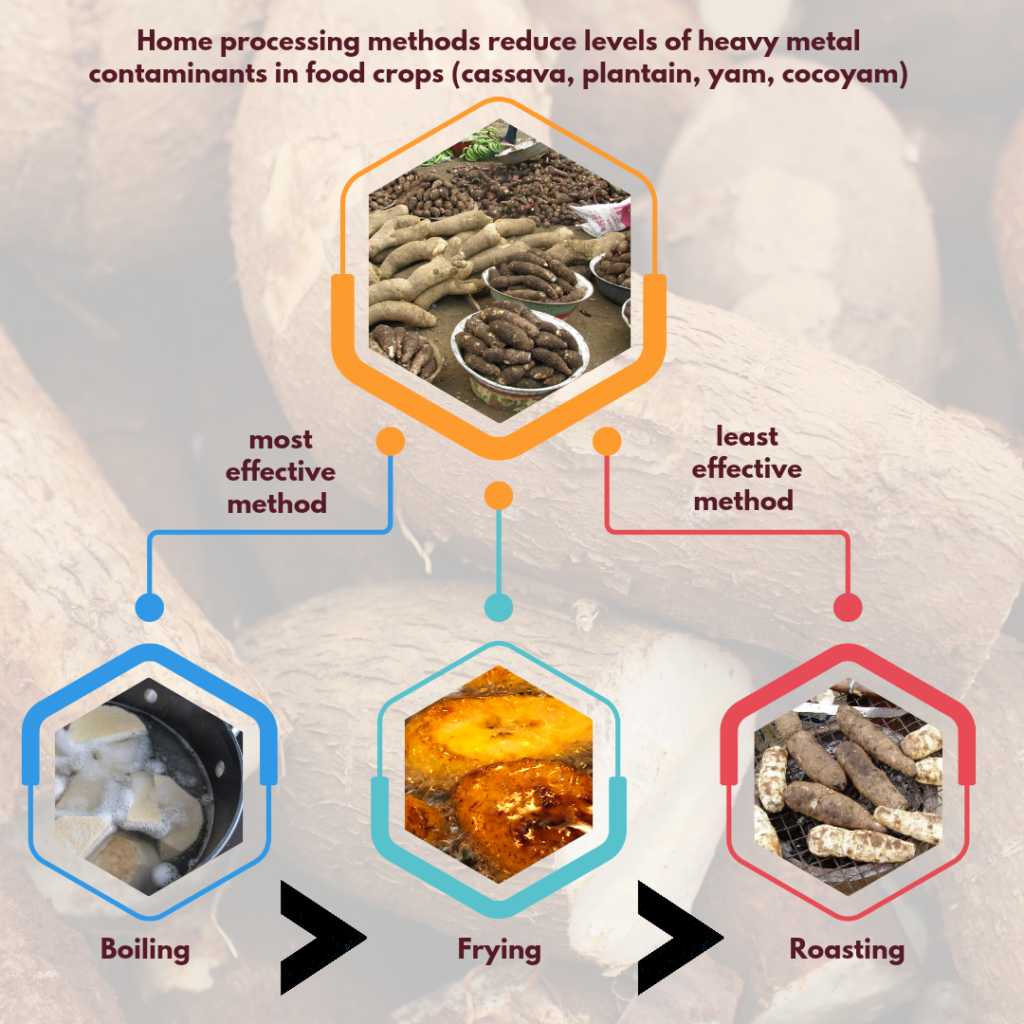
The scientists found that the hazard indices of all metals in all food crops were less than one which means they posed no risk to consumers.
The study therefore reveals that the normal home processing methods are able to reduce the levels of heavy metal contaminants found in cassava, cocoyam, plantain and yam considerably.
"Some of the heavy metals detected were above WHO specifications. However, health risks assessment indicated that they do not post health risks as the HI were below 1. In addition, processing methods such boiling, frying and roasting are capable of reducing the levels of these metals," Dr. Ofori said.
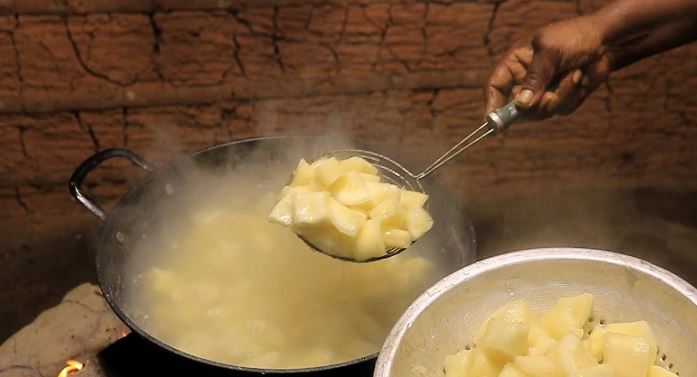
It's now established that there is low cancer-related disease risk among those consuming the staples and also, boiling and other food processing methods can rid the staples, for instance, of heavy metals.
Nonetheless, since most people I interviewed were concerned with eating foods coming from mining sites, and the risk of long-term negative effects suggest the need to formulate policies to guide the planting, harvesting and consumption of food crops from mining areas to safeguard the health of the population.
Latest Stories
-
Paris 2024: Opening ceremony showcases grandiose celebration of French culture and diversity
3 hours -
How decline of Indian vultures led to 500,000 human deaths
4 hours -
Paris 2024: Ghana rocks ‘fabulous fugu’ at olympics opening ceremony
4 hours -
Trust Hospital faces financial strain with rising debt levels – Auditor-General’s report
4 hours -
Electrochem lease: Allocate portions of land to Songor people – Resident demand
5 hours -
82 widows receive financial aid from Chayil Foundation
5 hours -
The silent struggles: Female journalists grapple with Ghana’s high cost of living
5 hours -
BoG yet to make any payment to Service Ghana Auto Group
5 hours -
‘Crushed Young’: The Multimedia Group, JL Properties surprise accident victim’s family with fully-furnished apartment
5 hours -
Asante Kotoko needs structure that would outlive any administration – Opoku Nti
6 hours -
JoyNews exposé on Customs officials demanding bribes airs on July 29
6 hours -
JoyNews Impact Maker Awardee ships first consignment of honey from Kwahu Afram Plains
8 hours -
Joint committee under fire over report on salt mining lease granted Electrochem
8 hours -
Life Lounge with Edem Knight-Tay: Don’t be beaten the third time
8 hours -
Pro-NPP group launched to help ‘Break the 8’
8 hours

